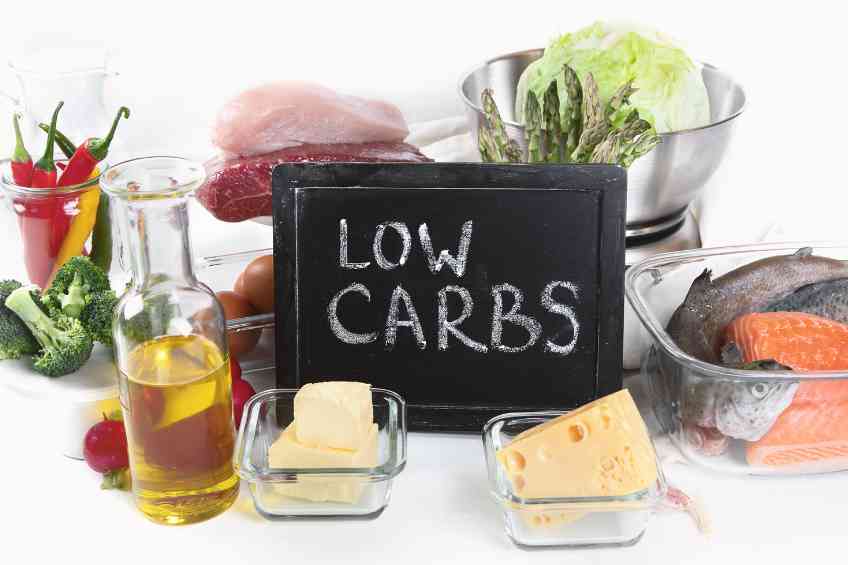By Kathleen Driscoll –
Americans love their diets—and, in fact, it’s a big multi-billion-dollar business for companies that supply the related goods and the experts who write books, host seminars and produce podcasts promoting particular approaches. Little wonder then that about four out of every 10 adult Americans are on some kind of meal plan, usually intending to lose weight.
Diet promotion undeniably increases awareness, but it doesn’t always result in popularity or productivity. Consider the keto and paleo diets—two low-carb diet approaches that are widely recognized thanks to a stream of substantial promotion during the last decade. Of the tens of millions of Americans on a diet, it is estimated that perhaps 13 million try the keto diet annually, while up to three million embrace the paleo plan.
Popularity aside, the bigger issues facing these diets are their differences, effectiveness at weight loss and whether they present any health risks. The answers are mixed. Both diets can trim pounds, although whether their approaches result in a short-term loss versus long-term body-weight maintenance is debatable, according to some research.
In general terms, low-carb diets focus on proteins and some non-starchy vegetables, limiting grains, fruits, bread, legumes, sweets, pasta and starchy vegetables, the Mayo Clinic reports. Sometimes nuts and seeds are included. A daily limit of 0.7 to 2 ounces (20 to 57 grams) of carbs is typical in a low-carbohydrate diet, providing up to 240 calories.
The downscaling of carbohydrates comes into play because the Dietary Guidelines for Americans Standards report these carbs normally would make up 45 to 65 percent of a person’s daily calorie intake. Under this equation, a person consumes 2,000 calories a day, with carbs accounting for 900 and 1,300 calories.
Approaches like the keto and paleo diets aim to limit carbohydrates, focusing instead on healthy fats, protein and limited carbs that lead to some short-term weight loss by reducing calorie intake and helping users feel full, so they eat less.
With their emphasis on low carbohydrates, both keto and paleo diets have grown in popularity in recent years. While they each have their own unique spin, ultimately, they are not groundbreaking. The modern adaptation of low-carb diets can be traced back 50 years to the introduction of the Atkins diet, which promoted that carbohydrate restriction was the “high-calorie way to stay thin forever.” Today, these diets also claim to reduce the risk of heart disease and diabetes.
The paleo diet is also referred to as the Stone Age diet because it zeros in on what people ate during the Paleolithic era. This includes meat, fish, fruits, vegetables, nuts and seeds, along with selected fats and oils, such as coconut oil, olive oil, avocado oil, lard and ghee/butter.
This diet eliminates grains, legumes and processed foods, while also putting an emphasis on enhancing lifestyle practices, including wellness practices and exercise.
In contrast, the highly popular keto diet, based on 2,000 calories per day, centers on high-fat foods, protein and dramatically restricting carbs with a generally recommended ratio of 60 percent fat, 30 percent protein and 10 percent carbohydrates, according to Healthline.com.
The keto diet aims to induce a “ketogenic” state or “ketosis,” which encourages a body to use calories from fat instead of carbs to create normal metabolic energy. By relying mainly on fat instead of sugar for energy, the body can lose weight quickly.
Both approaches rely on whole foods, fresh vegetables, meat, fish and nuts, while eliminating added sugar, grains and legumes. Moderate to liberal amounts of selected refined oils, such as olive or avocado oils are also encouraged. Keto puts a heavy emphasis on fat, which Healthline reports makes it the cornerstone of the entire diet. Paleo, in turn, encourages the intake of healthy or unrefined fats.
The diets are undeniably connected to weight loss and there seems to be little doubt if users strictly adhere to either approach significant short-term reductions are possible. It is unclear, however, whether long-term weight loss is possible either because of the nutritional approaches of the plans or the difficulty dieters face keeping pace with the strict guidelines.
Weight loss is only one consideration for these diets. There are concerns these diets may lead users to new problems. A high-fat “keto-like” diet might be linked to higher levels of so-called “bad cholesterol” and actually “double the risk of cardiovascular events” such as blocked arteries, heart attacks and strokes, according to a new research study by Canadian researchers.
The paleo diet, in turn, might lower the risk of cardiovascular disease by reducing blood pressure and total cholesterol. But by cutting out grains, diets might be missing some critical B vitamins, including thiamine, folate, niacin and riboflavin. The keto diet eliminates grains and fruits, which can cause deficiencies in selenium, magnesium, phosphorus and B and C vitamins.
Ultimately, these approaches may lead to short- and even long-term weight loss, but both low-carbohydrate diets still haven’t been studied sufficiently to determine their potential risks. Claims these diets can cause a risk of heart disease and diabetes, for example, are unfounded, according to research.
The Mayo Clinic notes dieters may secure the same weight-loss benefits by simply eating a healthy, balanced diet and exercising more.












